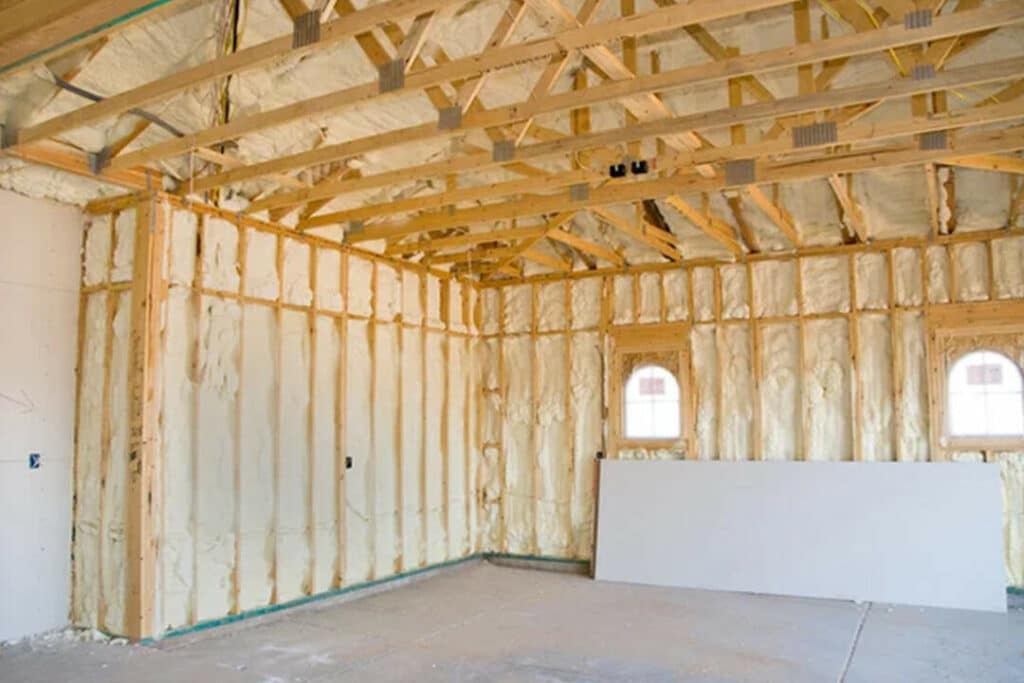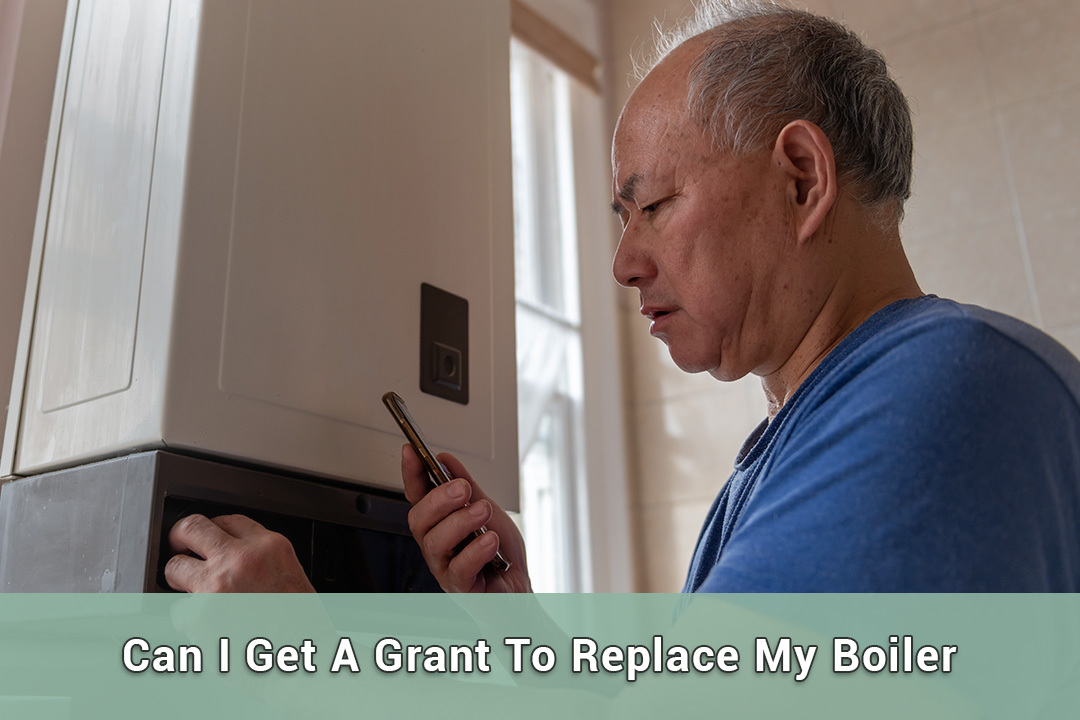Table of Contents
Insulating walls inside makes dwellings more energy efficient and prevents heat loss. Insulating the inside walls of a building saves money on energy costs, lowers carbon pollution, and raises comfort.
This blog will explain about the benefits of insulating your walls from the inside and the government’s plan (GBIS) that lets anyone use this method to save money on energy costs. GBIS makes it easy and cheap to cut your energy costs and make your home more energy efficient, whether you own it or rent it. Let’s see how GBIS makes wall insulation simple and can improve your house.
Understanding Internal Wall Insulation
Adding insulated material to the inside walls of a building is what internal wall insulation, which is also called inner wall insulation. This process helps cut down on the heat that escapes through the walls, which makes the building more energy efficient.
It can really help homes that don’t have good insulation because it can cut down on heat loss and energy bills. It is possible for homeowners to get a better energy performance certificate (EPC) grade and make their house more energy efficient by insulating the inside walls.
What It is and How It Works
This is the process of adding insulation to the inside walls of a building, normally behind plasterboard or dry lining. With this process, you can make a thermal shield that stops heat from leaving through the walls and keeping it inside the building. People can keep their homes warm in the winter without using as much heat if they seal the walls inside. This saves energy and brings down their energy bills.
Adding insulation to the inside of walls is a great way to improve a home’s energy efficiency certificate (EPC) grade. An EPC score tells you how energy-efficient a building is. A higher score means the building takes in less energy.
Improving the insulation, even the insulation inside the walls, can raise the EPC grade by a lot. This makes the house more desirable to sellers and renters. Insulating the inside of walls also cuts down on carbon pollution.
Benefits of Internal Wall Insulation
Insulating the inside of walls has many benefits, such as:
- Lower energy bills: Wall insulation helps keep homes warmer by preventing heat loss through walls. This means that homes don’t need to be heated as much, which lowers energy bills.
- Lowered carbon emissions: Homes that use less energy help lower carbon emissions, which fights climate change and builds a better future.
- Better energy efficiency: Insulating the inside walls of a building can make it much more energy efficient, which makes it more comfortable to live in all year.
- Higher family income: Insulating the inside of walls can lower energy bills, which can free up extra money that people can spend on other things.
- Property value goes up: Adding better insulation to the walls inside the house, can raise a home’s energy performance certificate (EPC) grade, which makes it worth more on the market.
People can get these benefits and make their houses more comfy, energy-efficient, and cost-effective in the long run by sealing the walls inside.
Internal Wall Insulation Under GBIS
The government internal wall insulation under GBIS plan is a grant programme that helps homeowners and renters insulate their walls to make their homes more energy efficient. One way that GBIS helps households save money on wall insulation is by paying for some of it.
This means that more households can afford it and use it. Homeowners and renters who use GBIS can save money on energy costs, cut down on carbon pollution, and make their homes more energy efficient overall. Let’s take a closer look at the GBIS plan and see how it can help you properly insulate your inside walls of the house.

An Overview of GBIS
With the help of the internal wall insulation under GBIS, the UK government can reach its goal of making no net carbon dioxide. These changes can save people up to two-thirds of the cost of making them, like covering the inside of walls. People who own or rent their homes can get refunds from the plan. The goal of GBIS is to get people to lower their energy costs and use green energy by making it cheaper to save energy.
People who own their own homes or rent can get a lot of ways to save energy through GBIS. For example, loft insulation, interior wall insulation, and wall insulation are all helpful. People can help the earth and cut down on their carbon footprint by making their homes use less energy.
How GBIS can Help in Insulation
With GBIS, landlords and renters can get insulation more easily and for less money. By giving money, GBIS helps lower the prices of installing insulation in the inside of walls, making it a choice for people who might not have thought about it otherwise. People can choose from different insulation methods under the plan, so they can get a solution that fits their needs perfectly.
GBIS not only lowers energy costs, but it also helps keep homes warm by stopping heat from escaping. People who own or rent homes can get better energy efficiency without having to pay a lot of money for it by sealing the walls inside. GBIS gives people incentives to use insulation materials that meet energy performance standards. This makes sure that homes meet energy efficiency standards and helps the country’s total energy performance.
Applying for GBIS
Once you meet the standards and have a current energy performance certificate (EPC) for your house, you can start the GBIS application process. The wall insulation under GBIS grant application process is simple and easy to use, so anyone can get the help they need to make their houses more energy efficient. We’ll show you how to apply step by step and tell you what happens after you send in your application next.
What Happens After You Apply
After you apply for an internal wall insulation grant through GBIS, the people in charge of the programme will check to see if you are eligible and look over the information you gave them. You will get proof that the grant was approved and the amount of money that will be given to your project if everything is in order.
Once the grant is accepted, the next step is to work with a licensed insulation contractor. They will look at your home to figure out how much work needs to be done to insulate the walls inside. This poll will help figure out the exact insulation method to be used as well as any other issues that need to be thought about, like moving fixtures or cabinets.
The insulation worker will then continue with the installation of the wall insulation, making sure that the energy efficiency changes are carried out in a way that meets GBIS standards. You can enjoy the benefits of a more energy-efficient home once the work is done.
Maximising the Benefits of GBIS
To get the most out of your wall insulation grant, think about how much the shelves and fittings weigh. Check to see how the different types of insulation might affect your light switches and floor boards.
Plan the application so that it doesn’t get in the way of your daily life too much. Pick a method that won’t change the look of your interior walls, like brick walls or hollow wall insulation. Staying aware of these things will help you get the most out of the GBIS without putting your home at risk.
Tips to Make the Most of GBIS
Here are some things you can do to get the most out of internal wall insulation under GBIS:
- Before putting up insulation, fill in any holes or cracks in the walls. This will make the insulation shield stronger.
- Choose insulation materials that are good at keeping heat in and out while also being energy-efficient. Aim for high performance and longevity.
- Putting thermal shielding boards behind radiators will help keep heat in and lower energy use.
- Use GBIS to your advantage by tackling other energy-saving tasks along with wall insulation, like loft insulation or hollow wall insulation.
- After installing insulation on the inside of walls, keep an eye on how much energy is being used and make changes as needed to save the most energy.
- People who own or rent homes can get even more out of internal wall insulation and lower their energy costs by following these tips.
Common Mistakes to Avoid
If you want to get an internal wall insulation grant through GBIS, you should know about these usual mistakes:
- Because they don’t study protecting methods and materials enough, they don’t get the most out of their energy.
- If you don’t use approved insulation fitters, you might not be following GBIS rules.
- Not thinking about other ways to save energy that could be used along with insulating the inside of the walls, which could save money.
- Not following GBIS’s step-by-step directions, which could make the application process harder or take longer.
- If you don’t know how important it is to measure and test things correctly, it could affect your chances of getting the grant and how well the insulation works inside the walls.
- If people who own or rent don’t make these mistakes, the application process will go more quickly and they will get more out of GBIS.
Does Internal Wall Insulation under GBIS increase Home Value?
One thing people ask about GBIS interior wall insulation is if it would increase their property value. Insuring walls may make houses more energy efficient and minimise energy expenses, but the value of a property depends on several things.
Making a house more energy efficient with wall insulation may boost its EPC. A property with a higher EPC score may attract buyers by demonstrating energy efficiency and carbon reduction.
However, depending on the market, location, and other circumstances, interior wall insulation may not increase a home’s value. A certified inspector or real estate agent can explain how adding insulation to your walls may affect its worth.
Conclusion
Finally, adding insulation to the inside of your walls is a quick, easy, and inexpensive way to make your home more energy-efficient. Many good things happen because of it, like less heat loss, lower energy bills, and more comfortable living space. When you use GBIS, you can get an internal wall insulation option that you can count on.
The GBIS application process is easy, and the programme helps qualified homes with money. By using GBIS, you can get the most out of the wall insulation and make your home more comfy and environmentally friendly. Don’t pass up this chance to make your home more energy efficient. You can start getting the perks of GBIS right away by applying for it.







